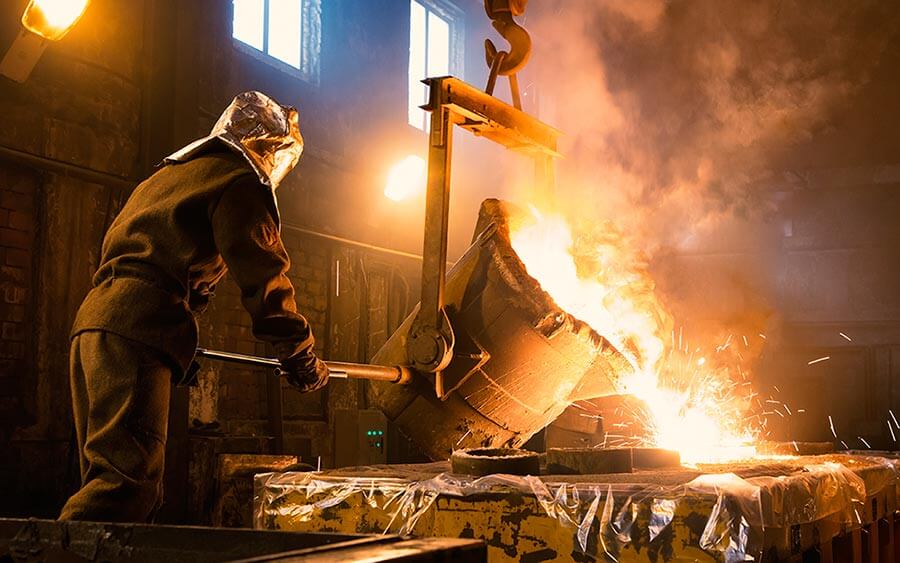Given that the steel industry accounts for approximately 8% of global carbon dioxide (CO2) emissions, reducing these levels of emissions from manufacturing plants is critical for steelmakers as the global decarbonization agenda continues to advance.
Companies that act now to improve sustainability will benefit from environmental, social and governance (ESG) metrics to gain a competitive advantage and stay ahead of changing carbon legislation.
Over the decades, technological advances and the switch from conventional blast furnaces (BF) to electric arc furnaces (EAF) have drastically reduced energy consumption in steel production. This switch to electric arc furnaces will further reduce emissions and help create a truly sustainable industry.
Sustainability and ESG
Steel firms are taking active and aggressive actions to move towards more sustainable operations and production by ensuring they use only clean technologies in new ventures while trying to balance risk, capital cost, and quality.
A majority of operators are reducing production lines making the old-style steel to steer all production towards sustainable products.
This then helps all such companies improve their ESG performance and credentials to meet shareholder and market expectations. Better ESG performance can secure project financing at a lower cost, enhance resources management, reduce operational risk, and increase resiliency against future changes.
Going digital
Almost all steel production sites are undergoing digitalisation and technological equipment has changed for more sustainable operations, monitored 24/7 by digital assets and sensors to provide operational data providing detailed information on their status.
Some of the questions these changes answer are:
- How much energy is being used?
- What is the source of the energy?
- How much ore is being used?
- How much steel is being produced?
- How much water is being used?
Analysis of information gathered by these, and numerous other questions, allow companies to bring an accuracy to operational results that is leading steelmakers to realise very quickly how fast these new devices, systems, and processes are demonstrating a return of investment (ROI).
Another and even more important aspect is that companies can provide these data, results and analyzes to independently confirm their sustainability capabilities.
Global Steel Market Overview
According to a recent GlobalData report titled “Global Steel – January 2022”, the global steel market has grown over the past five years, despite contracting in 2019 and 2020.
The market expects strong growth in 2021, followed by volatile growth. The largest single market is the Asia-Pacific region, accounting for 77.7% of the total market capitalization, while the second largest market is Europe, accounting for 12.3%.
During the same period, Asia-Pacific steelmaking grew the fastest, with a growth rate of 11.5%, while the Middle East increased by 11.2%. Other regions expanded sluggishly during the same period. Forecasts suggest the Middle Eastern region will remain a strong grower in terms of steel, with predictions of 7.4% growth over the next five years. However, the US is expected to be the fastest-growing segment of the global steel market, with a growth forecast of 7.8%.
Total revenue in 2020 is USD 1,017.9 billion, growing at a compound annual growth rate (CAGR) of 8.9% from 2016 to 2020. In comparison, the Asia-Pacific and U.S. markets will grow at a CAGR of 11.5% and 1.3% over the same period, reaching $791.2 billion and $57.3 billion by 2020, respectively.
The market development is expected to slow down and is expected to grow at a five-year CAGR of 5% during 2020-2025, which is expected to drive the market value to USD 1,299.3 billion by the end of 2025. In comparison, the Asia-Pacific and U.S. markets will grow at a CAGR of 4.6% and 7.8% over the same period, reaching $989.3 billion and $83.3 billion by 2025, respectively.
Steel market snapshots
- The global steel market shrank by 3.6% in 2020 to reach a value of $1,017.9 billion.
- In 2025, it is forecast to have a value of $1,299.3 billion, an increase of 27.6% since 2020.
- It grew by 0.2% in 2020 to reach a volume of 1,786.3 million tons.
- In 2025, the forecast is it will have a volume of 2,126.3 million tons, an increase of 19% from 2020.
Collaborations towards greener production
Companies are collaborating with suppliers to create end-to-end green supply chains, such as Sweden’s SSAB’s HYBRIT technology initiative with partners LKAB and Vattenfall.
Simply put, the company produces steel using its EAFs to melt direct reduced iron (DRI) supplied by miner LKAB using green hydrogen provided by sustainable energy provider Vattenfall.
In fact, with Volvo producing a world-first autonomous mining truck in 2021 from the company’s fossil-free steel, the SSAB example can be extended all the way to end-users.
SSAB plans to convert all its sites to EAF smelting using the greenest suppliers of ores and energy. The company is already on target to produce commercial quantities of fossil-free steel by 2026 and has a further target of 2030 to make all its steel products sustainable.
It continues to invest in reducing reliance on coal and other fossil fuels, increasing the efficiency of recycling waste heat, and reducing water usage. EAF technology reduces emissions and becomes an even more sustainable process when it is used to smelt and recycle scrap steel.
Steel is one of the most durable, endlessly recyclable materials on the earth; it is also the most recycled. Over the course of green steel’s life cycle, investing in the development of a more environmentally friendly production method will pay huge environmental dividends.
High-strength steel for low-carbon, lower life-cycle cost bridges
With this product now available in ballistic strength, learn about SSAB’s portfolio of weathering steels for constructing low-maintenance bridges with superior corrosion resistance and low environmental impacts. With detailed design, technical data, and information on the different types of projects the company has worked on for clients, you will gain a deep understanding of this high-grade construction material. Download the presentation for a comprehensive overview that will demonstrate the choices available to companies who want to build beautiful, artistic, and long living installations.

